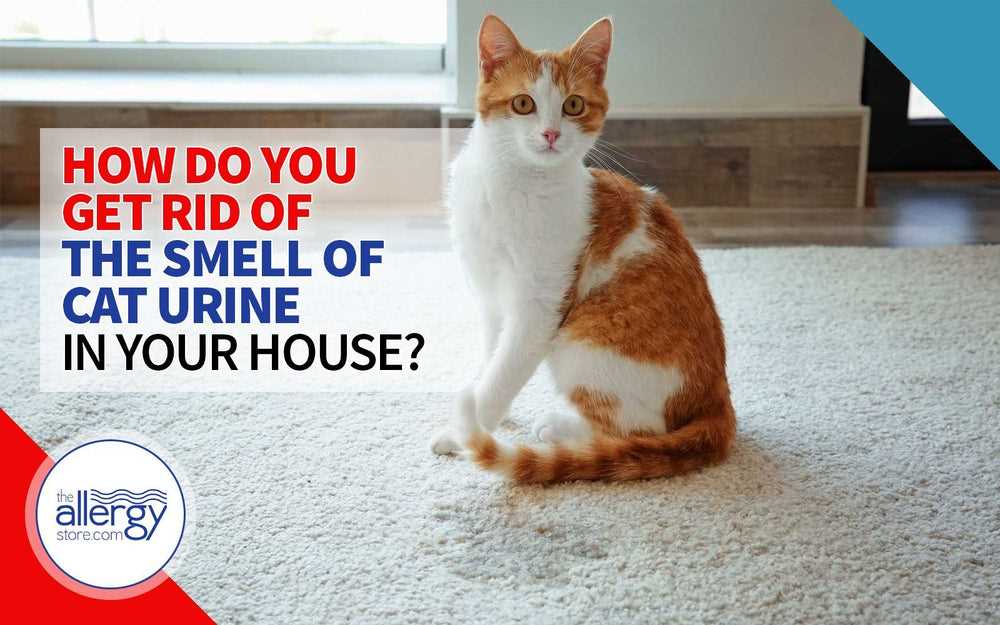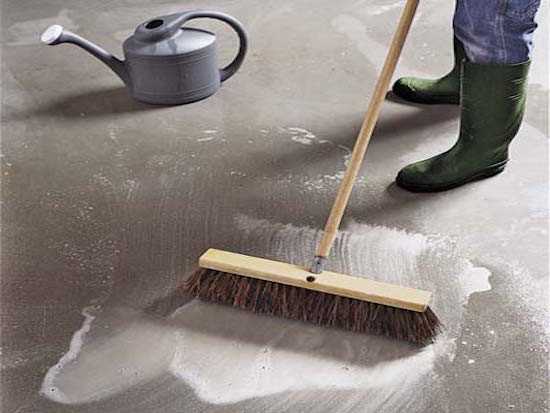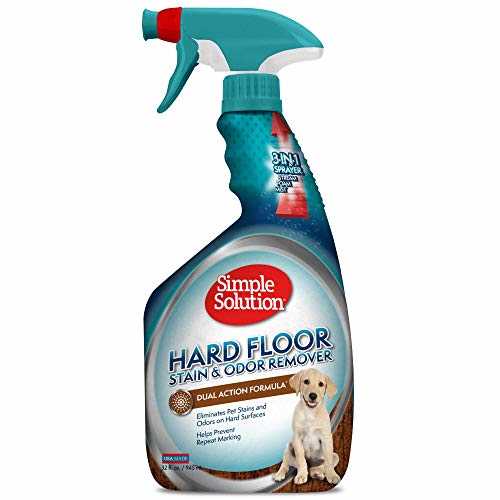



First, mix equal parts of white vinegar and water in a spray bottle. This solution neutralizes unwanted odors effectively. Spray the affected area generously, allowing it to soak for several minutes before wiping it clean with a cloth.
Next, sprinkle baking soda over the damp area. Baking soda absorbs lingering odors and moisture. Leave it on for a few hours, or ideally overnight, to maximize its effectiveness. Afterward, vacuum the residue to restore the surface.
For persistent issues, enzymatic cleaners are a powerful option. These specialized products break down the compounds causing the odor. Apply according to the manufacturer’s instructions for best results.
Finally, ensure proper ventilation in the area. Open windows or use fans to help dissipate any remaining odor. Regular cleaning and maintenance will keep your space fresh and pleasant.
Identify the Source of the Odor
First, check the areas where you usually hang out. Move furniture and inspect corners, as these spots can be hiding unpleasant surprises. Use a black light; it reveals any hidden traces that might not be visible to the naked eye.
Next, notice any spots that seem darker or stained. These could indicate previous incidents. Sniff test the area; if you detect something off, it’s likely a problem zone.
Pay attention to your litter box too. If it’s not maintained regularly, the odor can spread beyond its confines. Ensure cleanliness and consider a different type of litter if the current one isn’t absorbing well.
Finally, don’t forget about vertical spaces. I sometimes climb to higher spots; check shelves or cabinets. If you find a spot, treat it immediately to prevent lingering odors.
Choose the Right Cleaning Solution
Enzymatic cleaners are my top recommendation for tackling those stubborn odors left behind. These specialized solutions break down the proteins in the urine, eliminating the source of the unpleasant scent. Look for products specifically designed for pet messes, as they contain the right enzymes to do the job effectively.
For a natural alternative, try a mixture of white vinegar and water. Combine equal parts and spray it on the affected area. The vinegar neutralizes odors, and once it dries, the scent dissipates, leaving your space fresh.
Another option is baking soda. After cleaning the area, sprinkle baking soda over it and let it sit for several hours or overnight. This helps absorb any remaining odors. Vacuum it up afterward for a clean finish.
If you’re looking for additional comfort for your furry friend after a cleaning session, consider adding a pheromone diffuser for cats. It creates a calming environment, encouraging them to feel secure in their space.
Use Proper Cleaning Techniques
For effective results, use a combination of blotting and enzymatic cleaners. First, gently blot the affected area with paper towels to absorb as much liquid as possible. Avoid rubbing; this can spread the residue.
Application of Cleaner
Once blotted, apply an enzymatic cleaner directly onto the area. Follow the instructions on the product label, ensuring the solution sits for the specified time to break down odor-causing compounds. Rinse the area afterward with clean water.
Final Touches

After cleaning, make sure to dry the surface thoroughly. A fan or open window can help speed this process. For persistent odors, consider using a UV light to locate any hidden spots. This method helps identify areas that may need extra attention. If you’re into photography, capturing the before and after with the best camera for digitizing film can be rewarding!
Neutralize the Odor with Natural Remedies
White vinegar is a powerful solution. Mix equal parts of vinegar and water in a spray bottle. Apply this mixture to the affected area, let it sit for a few minutes, then blot with a clean cloth. This helps to break down the odor-causing compounds effectively.
Baking soda acts as a natural deodorizer. After cleaning with vinegar, sprinkle a generous amount of baking soda over the area. Let it sit for several hours or overnight, then vacuum it up. This will absorb lingering odors.
Hydrogen peroxide can also aid in neutralizing unwanted scents. Mix a solution of one part hydrogen peroxide, one part water, and a small amount of dish soap. Test this on a hidden spot first, then apply it to the soiled area. Rinse with water after a few minutes.
Essential oils offer a pleasant alternative. Use oils like lavender or lemon in a diffuser or mix a few drops with water in a spray bottle. Lightly mist the area after cleaning to leave a fresh scent, but ensure the oils are safe for pets.
Citrus peels can be surprisingly effective. Place orange or lemon peels in the vicinity to naturally combat odors. They release a fresh fragrance while helping to mask any unpleasant scents.
Activated charcoal is another excellent choice. Place bowls of activated charcoal near the affected area to absorb odors over time. This option works well for long-term odor control.
Lastly, coffee grounds can be used as a natural deodorizer. Simply place dry grounds in a bowl near the area to neutralize unwanted aromas.
Apply Enzymatic Cleaners for Best Results

Enzymatic cleaners work wonders on tough odors. These solutions break down organic materials, eliminating the source of the unpleasant scent rather than just masking it.
Here’s what to keep in mind when using enzymatic cleaners:
- Choose a product specifically designed for pet-related issues. Read labels to ensure enzymes target urine components.
- Before application, thoroughly clean the area to remove any surface dirt. This prepares the surface for maximum enzyme effectiveness.
- Follow the instructions on the cleaner. Most require you to saturate the area, allowing the enzymes to penetrate deeply.
- For stubborn areas, consider applying the cleaner multiple times. Allow sufficient dwell time as recommended, so enzymes can do their job.
- After treatment, rinse the area with water and blot it dry. This helps remove any residue while promoting freshness.
Regular use of enzymatic cleaners can help maintain a clean and pleasant environment, ensuring the space remains inviting for both humans and furry companions.
Prevent Future Incidents with Training Tips

Establish a designated litter area. Consistency is key; choose a spot where I always go. This helps me understand where it’s acceptable to do my business.
Use positive reinforcement. Whenever I use the litter box correctly, offer treats or praise. This encourages me to repeat the behavior.
Keep the litter box clean. Regularly scoop and change the litter. A clean environment makes me more likely to use it. I might avoid it if it smells.
Observe my behavior. If I show signs of discomfort or avoidance, it might indicate a problem. Address any issues with my litter box or health promptly.
Consider my preferences. Different cats have different likes. Experiment with various litter types and box styles to find what I prefer most.
Limit stress factors. A calm environment helps maintain my well-being. Too much commotion or changes can lead to accidents.
| Tip | Description |
|---|---|
| Designated Area | Choose a consistent spot for the litter box. |
| Positive Reinforcement | Reward me for using the box correctly. |
| Regular Cleaning | Keep the litter box tidy to encourage use. |
| Behavior Monitoring | Watch for signs of avoidance or discomfort. |
| Preferences | Find the litter and box style I like best. |
| Stress Management | Create a calm and stable environment. |
Consider Professional Cleaning Services
If DIY methods don’t work, hiring a cleaning service can be a smart choice. These experts use advanced techniques and specialized products that are often more effective than conventional cleaning supplies.
Look for companies that have experience dealing with animal-related odors. They typically offer enzymatic treatments that target stains and odors at their source. This is particularly useful for persistent issues that home remedies struggle to eliminate.
Before hiring, read reviews and ask for recommendations. A reputable service will have positive feedback from previous clients. Make sure to inquire about their cleaning methods to ensure they align with your needs and preferences.
Additionally, consider the importance of a guarantee. Many professional services offer a satisfaction guarantee, which provides peace of mind that the job will be done correctly.
Lastly, check if they can provide follow-up services to help prevent future occurrences. Regular maintenance can keep your space fresh and odor-free.
FAQ:
What are the best methods to remove cat pee smell from a floor?
There are several effective methods to eliminate the smell of cat urine from floors. First, enzymatic cleaners are highly recommended as they break down the compounds in urine that cause the odor. You can apply these cleaners generously to the affected area, allowing them to sit for the recommended time before wiping them up. Another option is to use a mixture of vinegar and water; the acidity of vinegar can neutralize odors. Simply mix equal parts of vinegar and water, apply it to the area, and let it dry. Baking soda is also useful; sprinkle it over the damp area after cleaning and let it sit for a few hours before vacuuming. Always remember to test any cleaning solution on a small, inconspicuous area first to ensure it won’t damage your flooring.
Why is it important to address the cat pee smell immediately?
Addressing the smell of cat urine promptly is crucial for several reasons. Firstly, if the odor is left untreated, it can become more entrenched in the flooring and surrounding materials, making it much harder to eliminate later. Additionally, the scent can encourage your cat to urinate in the same spot again, as they are often attracted to their own scent. This can lead to a persistent problem and create a negative environment in your home. Furthermore, untreated urine can lead to potential health concerns, as bacteria can thrive in damp areas. By taking immediate action, you help maintain a clean and pleasant living space and reduce the risk of repeat accidents.










